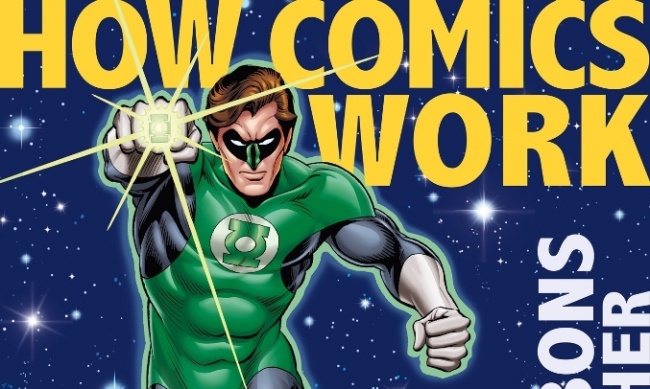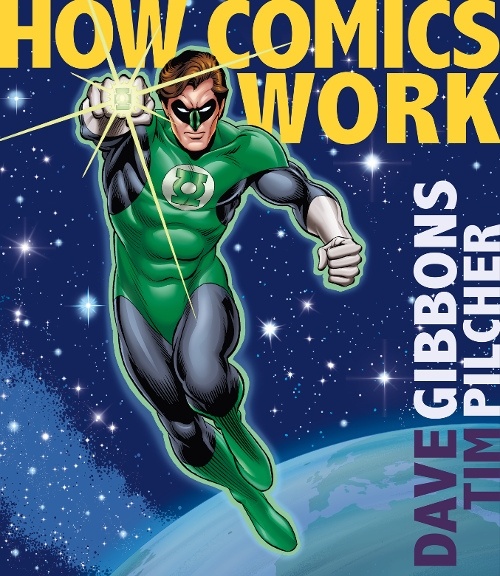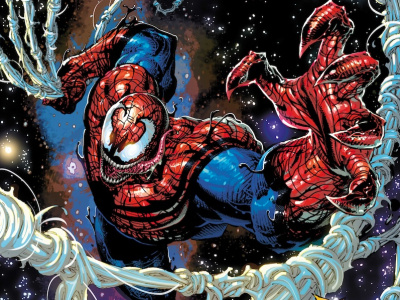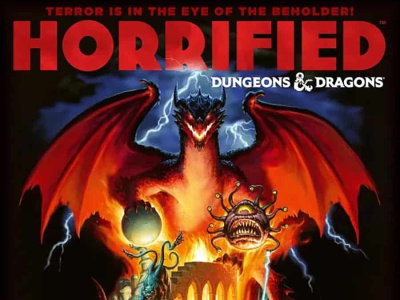How Comics Work TP
Publisher: Wellfleet Press
Release Date: October 2, 2017
Price: $24.99
Author(s): Dave Gibbons & Tim Pilcher
Format: 192 pgs., Full-Color, Trade Paperback
ISBN: 978-1-5771-5157-9
Age Rating: All Ages
ICv2 Rating: 5 Stars out of 5
Given the popularity of comics, in-print books on how to create them are relatively few. And those that are available in a secondary market are very limited in their scope, focusing on a single corporate brand of scriptwriting or drawing or coloring. Now, Dave Gibbons and Tim Pilcher have simplified the entire process with How Comics Work. With over forty years of comics experience, How Comics Works is comics the Dave Gibbons way and it is a comprehensive examination of the industry.
Most people know of Dave Gibbons the artist. From 2000 A.D. to Watchmen to Kingsman: Secret Service, Gibbons has solidified his position as a master and highly sought after illustrator. Yet, his experience in scriptwriting, lettering, coloring, logo design, and nearly every other facet of comics production is simply astounding. How Comics Work is organized around all these facets, divided into seven chapters: Scriptwriting, Visual Groundwork, Sequential Storytelling, Lettering, Coloring, Design, and Exercises. In each section, Gibbons discusses some of his personal influences and then breaks each major topic down into easily accessible lessons from initial story plotting to transforming a script into a viable, publishable comic book. Using personal examples from his lengthy career, Gibbons grounds each lesson in a specific comics page, panel, or series. As such, the illustrations are not only beautiful art, but pedagogical models for comics creation.
Yet, all the pedagogy would be meaningless without actual prompts for readers to devise and create their own comics. Gibbons’ final chapter includes several short exercises for audiences to test out the theories he has presented and begin their own roles as comic creators.
This book, however, is not solely for those just wanting to create comics as writers or artists or letterers. In fact, one of its greatest assets and values is for the comics editor and critic as a handy reference for the creative process. Gibbons’ sections on perspective, sequential storytelling, and page geography are stellar and will give editors and critics the language to discuss and evaluate writing and illustrations with the creators one-on-one.
How Comics Work is the next best thing to an actual apprenticeship with Dave Gibbons. Comic shops and libraries would be wise to invest in a copy as How Comics Work stakes a powerful claim as the industry standard in comics creation and production.
—Nathan Wilson

ICv2 Stars: 5 (out of 5)
Posted by Nathan Wilson on September 27, 2017 @ 2:35 am CT
MORE COMICS
'Venom' #252 to Feature Backup Story with New Suit, Plus New Story by DeFalco and Frenz
August 4, 2025
Venom #252 will feature a backup story about Venom’s new suit as well as a backup story by Tom DeFalco and Ron Frenz, the creators of the symbiote suit.
Showbiz Round-Up
August 4, 2025
The post-SDCC showbiz news is still spicy a week after the show's conclusion. It's time for another round-up!
MORE REVIEWS
ICv2 Stars: 3.5 (out of 5)
July 30, 2025
Here is a review of Ravensburger's Horrified: Dungeons & Dragons.
ICv2 Stars: 3.5 (out of 5)
July 24, 2025
Check out the review of Disney Villainous: Treacherous Tides, from Ravensburger.








